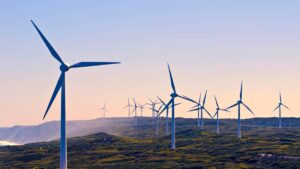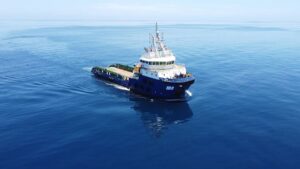Green Energy: Billionaire-backed Sun Cable one step closer to solar exports, and EnergyAustralia sets date to end coal

Picture: Brook Mitchell/Getty Images News via Getty Images.
Solar exports to eclipse dairy
The proponents of a subsea cable that will transfer Australian solar power 4200km from Darwin to Singapore say they will create a $2 billion export industry on their own.
That alone will rival exports from Australia’s long established dairy industry
Plans continue to ramp up for the Sun Cable Australia-Asia PowerLink, a +$30 billion mega project that will include a 17-20GW solar array, the world’s biggest battery at a scale of 36-42GWh and the world’s longest subsea cable.
Backed by Aussie billionaires Mike Cannon-Brookes and Andrew Forrest, the AAPowerlink jumped a major hurdle yesterday, securing a key recommendation from the Indonesian Government that it can run the cable through Indonesian waters.
The outcome of the project would be grand in scale, delivering 8.6Mt of CO2 abatement and supplying 15% of Singapore’s electricity needs from 2028 to match its entire climate abatement gap in its 2030 emissions reduction targets, and supplying renewable energy to Darwin in the Northern Territory.
The project will create some 1,500 jobs in construction, 350 operational jobs, and 12,000 indirect jobs, making an $8 billion injection to the Australian economy, primarily in the NT.
Cornerstone investor Mike Cannon-Brookes, who made his fortune in software alongside his Atlassian co-founder Scott Farquhar, said Australia has the potential to become a “renewable energy superpower”.
“Australia can become a renewable energy superpower. We can and should tap into our solar resources that could power the world 5 times over. Sun Cable is harnessing this at scale, and its Australia-Asia PowerLink will create massive local and international renewable energy opportunities,” he said.
“Securing Indonesian support is a big step towards realising our potential of becoming one of the world’s largest energy exporters.”
EnergyAustralia to exit coal by 2040
As the onrush of renewables lowers minimum demand, putting pressure on wholesale power prices and ESG investors bite, legacy generators are under increased pressure to firm up their exit from coal.
EnergyAustralia, believed to be one of the lobbyists behind the Government’s push to introduce a coal-favouring capacity mechanism into the electricity market, this week said it would transition out of coal by 2040.
It also intends to reach net zero by 2050, a target that is gaining momentum across industry and which it seems will eventually be mandated by the Federal Government despite internal ructions within the coalition about net zero.
EnergyAustralia says it plans to reduce emissions from its operation by 60% on 2019-20 levels by 2028-29.
“The clean energy transformation is accelerating, with more renewable, storage and flexible energy technology available at lower costs than ever before. Our Climate Change Statement shares our pathway to net zero,” new EnergyAustralia managing director Mark Collette said.
“Our approach continues to be one of long-term planning, where we consult with governments and communities as we design and deliver our transition – while ensuring our 2.4 million customers maintain access to reliable and affordable energy.”
The plan will necessitate the early closure of the Mt Piper coal station. A 1.4GW black coal generator located near Lithgow in New South Wales, which powers 1.18 million homes, Mt Piper was due to shut in 2042.
That date will now be brought forward to at least 2040.
“The energy transition has significant impacts for our power station workers and our local communities. While Mt Piper’s ultimate retirement date will be determined by several factors, we are committed to long term planning and supporting the transition for our workers and our local communities,” Collette said.
EnergyAustralia has announced a suite of new renewable or future energy initiatives in recent times, including plans to build one of the world’s largest batteries in the Latrobe Valley, the 250MW Kidston pumped hydro station in Queensland and the hydrogen and gas ready Tallawarra B power station, as well as a pumped hydro storage option at Mt Piper.
Related Topics
UNLOCK INSIGHTS
Discover the untold stories of emerging ASX stocks.
Daily news and expert analysis, it's free to subscribe.
By proceeding, you confirm you understand that we handle personal information in accordance with our Privacy Policy.








